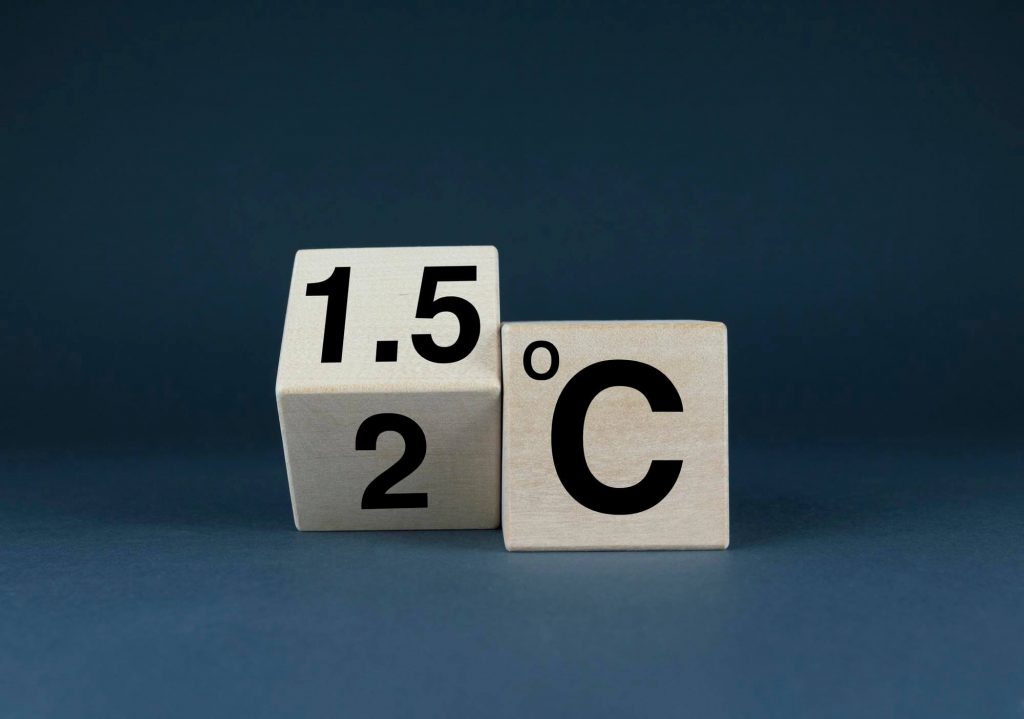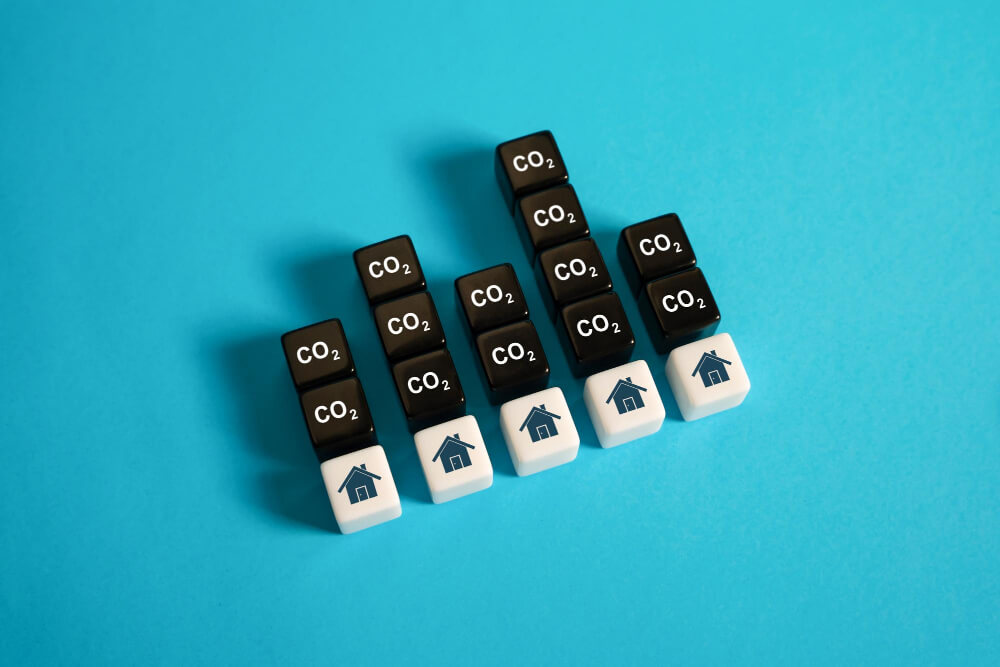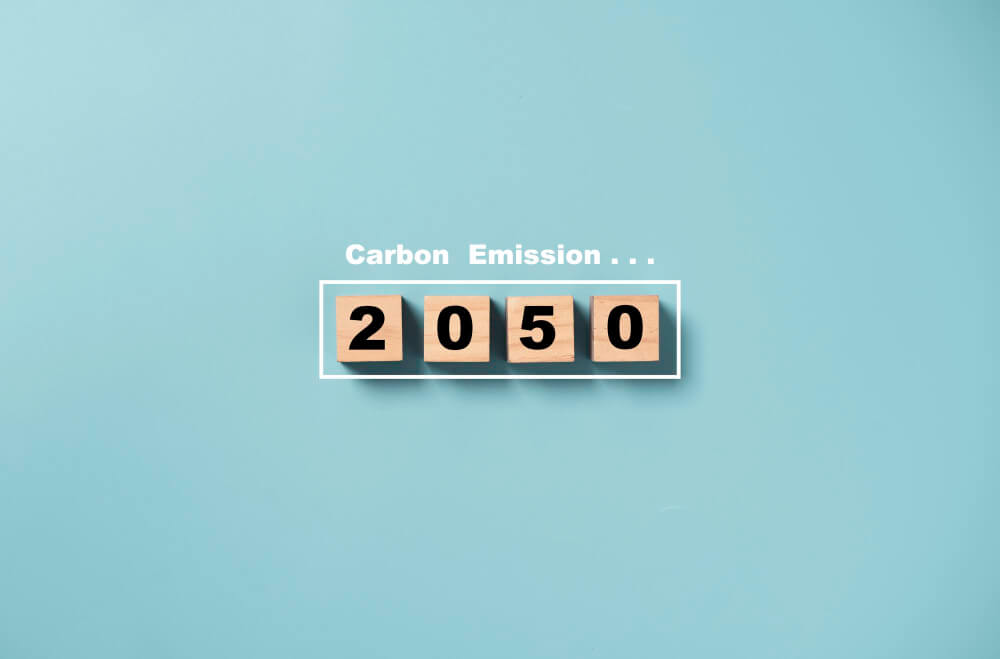Resources > Our Business
Reaching the 1.5°C Target: Understanding the Industry-Specific Challenges and Opportunities

In our previous article, we discussed the critical difference between a 1.5-degree and 2-degree global temperature rise and the importance of limiting global warming to 1.5 degrees. This article picks up from where we left off and delves into the role of each industry in closing the gap in climate action across the highest-emitting sectors of the world and achieving the 1.5-degree Celcius goal through the insights from the State of Climate Action 2022 report.
To give a snapshot, the report offers a comprehensive analysis of the global climate action disparities across the world’s major emitting systems. WRI provides a critical evaluation of the progress in reducing greenhouse gas emissions, scaling up carbon removal efforts, and increasing climate finance to keep the goals of the Paris Agreement within reach.

The reality of global greenhouse gas emissions is dire. Despite the adoption of the Paris Agreement by over 190 Parties in 2015, emissions levels have only continued to rise. The effort to reduce GHG emissions and increase carbon removal across various industries, including power, buildings, industry, forests and land, technological carbon removal, and finance, is uneven and inadequate. While some countries, cities, and corporations have made commitments to mitigate the impacts of climate change, there is an urgent need for greater ambition and action to limit global warming.
So, what is each industry’s role in addressing this pressing challenge?
Shifting to Zero-Carbon Power Generation: The power sector, the world’s largest source of CO2 emissions, is undergoing a major transformation with the adoption of zero-carbon power sources, such as solar and wind, seeing record-breaking growth. However, the share of electricity from zero-carbon power sources has experienced almost no net change since 2000, and emissions from the power system hit an all-time high in 2021. To meet the demand for power and keep the 1.5-degree warming limit within reach, the share of electricity generated from zero-carbon power sources must accelerate 6 times faster this decade. This means phasing out unabated coal 6 times faster and decreasing natural gas used instead of increasing it.
“Major shifts are urgently needed in the power sector: energy access gaps need to be closed; energy needs to be used more efficiently, while demands need to be electrified and (in advanced economies) reduced; fossil fuels need to be phased out; and zero-carbon power and energy storage needs to be prioritized in energy policy. These shifts will ensure that global warming is limited to 1.5°C.”
State of Climate Action 2022
Decarbonization of Buildings: By 2030, buildings must become more energy efficient and transition to zero-carbon energy. Despite the availability of zero-carbon technologies like heat pumps, progress in decarbonizing this sector has been slow. To hold warming to 1.5 degrees C, energy intensity improvements in residential and commercial buildings must accelerate 7 and 5 times faster this decade, respectively. To reach the 2030 energy and carbon efficiency goals in buildings, existing structures’ retrofitting rates must rise to 2.5% to 3.5% annually by 2030, particularly in developed countries in Europe and North America, where current rates are below 1%.
“Reducing the energy intensity of buildings (the amount of energy used per square meter [m2] of floor area, including heating, cooling, and appliances) further helps to minimize overall energy demand from the sector. Energy-efficient technologies are key to reducing overall demand, while improvements to building design, including orientation, air flow, facades, and color, reduce the need for active heating or cooling. A final key component to eliminating emissions from buildings operations is reducing the intensity of remaining energy use. Energy use can be decarbonized by switching the energy source for heating and cooking equipment from fossil fuels to electric power and decarbonizing the power supply.”
State of Climate Action 2022

Lowering Industrial Emissions: The industrial sector, which includes the production of goods and materials such as cement, steel, and chemicals, as well as the construction of infrastructure, has seen a significant increase in GHG emissions since 2000. While efficiency improvements have reduced the amount of GHGs emitted per unit of production, rising demand for industrial products has offset these gains, resulting in an overall increase in emissions. The report suggests that recent efforts to electrify industrial processes must be accelerated by 1.7 times to address this. New technologies must be developed to decarbonize the hardest-to-abate industrial operations, such as high-heat processes and chemical reactions that emit GHGs. Additionally, the carbon intensity of cement and steel production must improve significantly, with gains in these areas needing to accelerate more than 10 times faster this decade.
“Transforming industry to achieve the deep GHG emissions cuts required to hold global warming to 1.5°C entails three critical shifts. First, significantly increasing energy productivity, which reduces energy use while maintaining services, can help reduce this system’s GHG emissions and lower the total amount of energy consumed across the industry that would otherwise need to be decarbonized. This must be achieved through technical energy efficiency, material efficiency, and service efficiency (ETC 2020). Second, electrification with a clean grid offers another strategy for curbing releases of GHGs, particularly for low- and medium-heat processes that currently rely on fossil fuels. However, not all industrial processes can be easily electrified. Thus, decarbonizing these processes requires strategies such as switching to new fuels to deliver high heat, developing technologies to eliminate process emissions and/or reliance on high heat, and using conventional technologies.”
State of Climate Action 2022
Meeting the 1.5°C limit will require unprecedented transformation across all economies, industries, and geographies.
Preserving and Rehabilitating Ecosystems: The objective of limiting global warming to 1.5°C necessitates taking immediate and decisive measures to curb deforestation, halt mangrove loss, and prevent peatland degradation. These ecosystems hold carbon stocks equivalent to over 3 times the total global emissions from 1990 to 2019. However, international efforts to protect these ecosystems are inadequate. From 2015 to 2021, deforestation occurred in an area the size of Iraq, emitting 25 GtCO2e, which is 42% of global GHG emissions in 2019. To achieve the 1.5-degree pathway, the world needs to restore 300 million hectares of forests, 20 million hectares of peatlands, and 240,000 hectares of mangroves by 2050 and 2030, respectively, but current efforts are insufficient to meet these targets.
“Holding global temperature rise to 1.5°C will require immediate action to protect the world’s natural carbon sinks and stores, as well as the rapid scale-up of global efforts to restore and sustainably manage these ecosystems.”
State of Climate Action 2022

Expanding the Adoption of Carbon-Removal Technologies: To hold global warming to 1.5 degrees C, it is not enough to just reduce emissions. Removing carbon from the atmosphere through natural approaches and carbon-removal technologies is also necessary. The scale of change needed this decade is significant. Currently, existing technologies remove only 0.5 MtCO2 annually, less than 1% of the 75 MtCO2 required annually by 2030. To achieve this target, a combination of technologies will be necessary to capture and store an additional 7.4 MtCO2 each year. Investment in carbon-removal technologies is increasing, and multiple large-scale projects are expected to be implemented in the next several years. This will be vital to addressing the challenges of implementing technological carbon removal and understanding the long-term potential of these technologies.
“The Science Based Targets initiative reports that 1,379 companies had net-zero commitments as of October 2022 (SBTi 2022); some of these companies will likely use carbon removal as one way to help meet their goals. At the national level, 24 of the 50 long-term strategies submitted to the UNFCCC as of March 2022 include plans to use technological carbon removal (Schumer and Lebling 2022; SBTi 2022). With these targets in place, many companies and countries are looking for carbon removal technologies to address emissions where abatement options are not available or are too costly.”
State of Climate Action 2022
Expanding Climate Finance and Synchronizing Financial Systems with the 1.5°C Climate Goal: To accelerate the transformation needed to achieve the 1.5 degrees C warming pathway, it is necessary to have a significant increase in finance and align the financial system with this goal. Although total climate finance has increased globally, it is not at the pace needed. Furthermore, the multiple crises such as COVID-19, Russia’s invasion of Ukraine, and the economic slowdown pose severe challenges to expanding and sustaining climate investments. Total climate finance must reach $5.2 trillion annually by 2030, requiring an average increase of $460 billion yearly – more than 10 times faster than current rates. To achieve this, there must be an increase in both public and private finance from domestic and international sources.
Additionally, flows from developed to developing countries must increase to at least $100 billion annually, a goal developed countries pledged to achieve by 2020 but have not yet fulfilled. To transform the financial system, it is also necessary to phase out investments in high-carbon activities like fossil fuel development and commodities that drive deforestation. Currently, efforts to mandate corporate climate risk disclosure, carbon pricing mechanisms, and ending public financing for fossil fuels are not on track.
“An analysis of 12 studies around the world found that for every $1 million spent, 1.2 to 2.8 times as many full-time equivalents, near-term jobs could be created if invested in the renewable energy or energy efficiency sectors compared to the same level of investment in the fossil fuel sector (Jaeger et al. 2021).”
State of Climate Action 2022

The Road Ahead: 2030 & 2050 Goals
Limiting global warming to 1.5°C is still possible but requires immediate, ambitious, and concerted action from leaders across various industries worldwide. The next few years provide a narrow window to make a significant impact toward a sustainable and livable future. To meet 2030 targets, each industry must assume its responsibility, recognizing the far-reaching impact of their actions on the planet and society.



